JOIN the AFICIONADOS
Get the insider news and lowdown on what we've been up to, where we've been, and who we've met along the way. Be the first to discover new places and get the scoop on our favourites.
Step inside Altstadt Vienna and you step into the living biography of Otto Ernst Wiesenthal, a man who traded high-powered careers in technology, banking and the automotive world for a different kind of stage. In 1991, he opened the doors of a grand 19th-century patrician house in Vienna’s 7th district, not to create just another hotel but to build a salon of art, ideas and stories. Each of the 62 rooms now carries a singular identity, layered with works by Warhol, Leibovitz, Kusama, Prachensky, and a chorus of Austrian voices, both established and emerging. Otto’s approach was not simply about beds and breakfasts; it was about creating a home where art breathes, conversation is part of the décor, and the city’s creative pulse hums just beyond the doorstep.
Today, that pulse beats to a new rhythm. Otto has stepped back from the day-to-day, entrusting the future of Altstadt Vienna to his daughters, Saskia and Lisa, who grew up with the scent of coffee mingling with turpentine, the sounds of dinner parties under chandeliers and the changing colours of art on the walls. They bring their own generational lens, tuned to contemporary travel sensibilities, digital culture and the evolving dialogue between Vienna’s heritage and its modern creative scene. Together, father and daughters form a dialogue across decades that keeps Altstadt in motion: part gallery, part gathering place, always alive.
In 1991, you rescued a vacant Pension Bellaria and opened Altstadt with just 24 rooms. What was the very first artwork you chose to hang, and why did it set the tone for your vision?
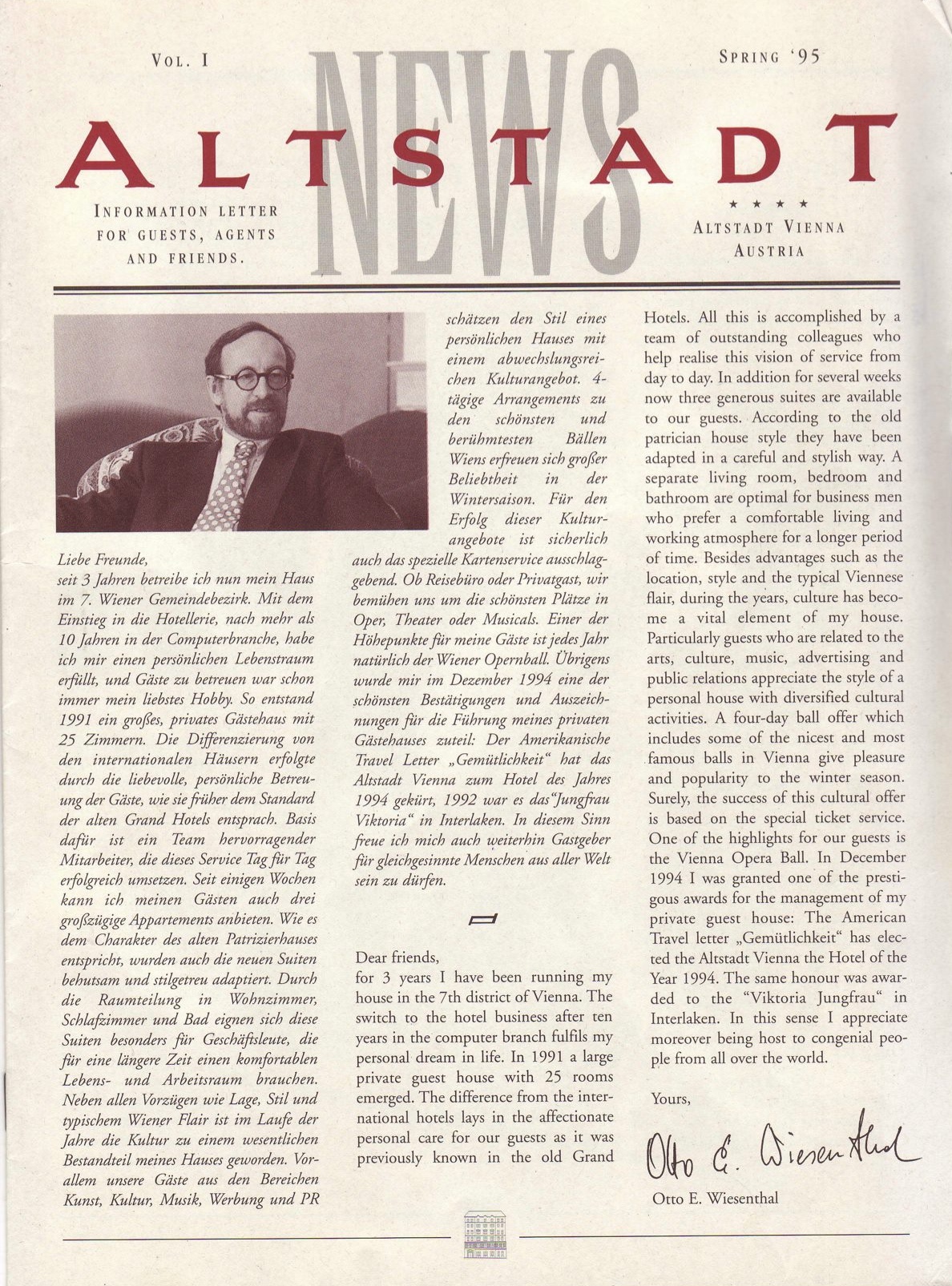

Nowadays, you can find the Atanasov painting in one of the hotel's hallways, and it is still one of my favourite art pieces.
You have commissioned rooms from Matteo Thun, Lilli Hollein, Arthur Arbesser, Tobias Moretti and others. How do you draft the design brief, and where do collaborators get room to bring their own interpretation?
Saskia: The creatives we choose have a pretty much free hand on the design of the rooms and suites, except for a certain budget. What we ask of them is to think about the Viennese way of life, so the story of the creation has something to do with the city itself. Our guests should be able to sense the designer’s personality as well. In the end, the draft must be realistic and fit our hotel. The design brief is a conversation about the hotel’s story, our family and the designer’s approach.
Your collection includes Warhol, Leibovitz, Brandl, Kusama and more. You have said that “good art… inspires, lets you dwell in the moment, and poses questions.” Could you unpack what that means for you, especially in a hotel context?
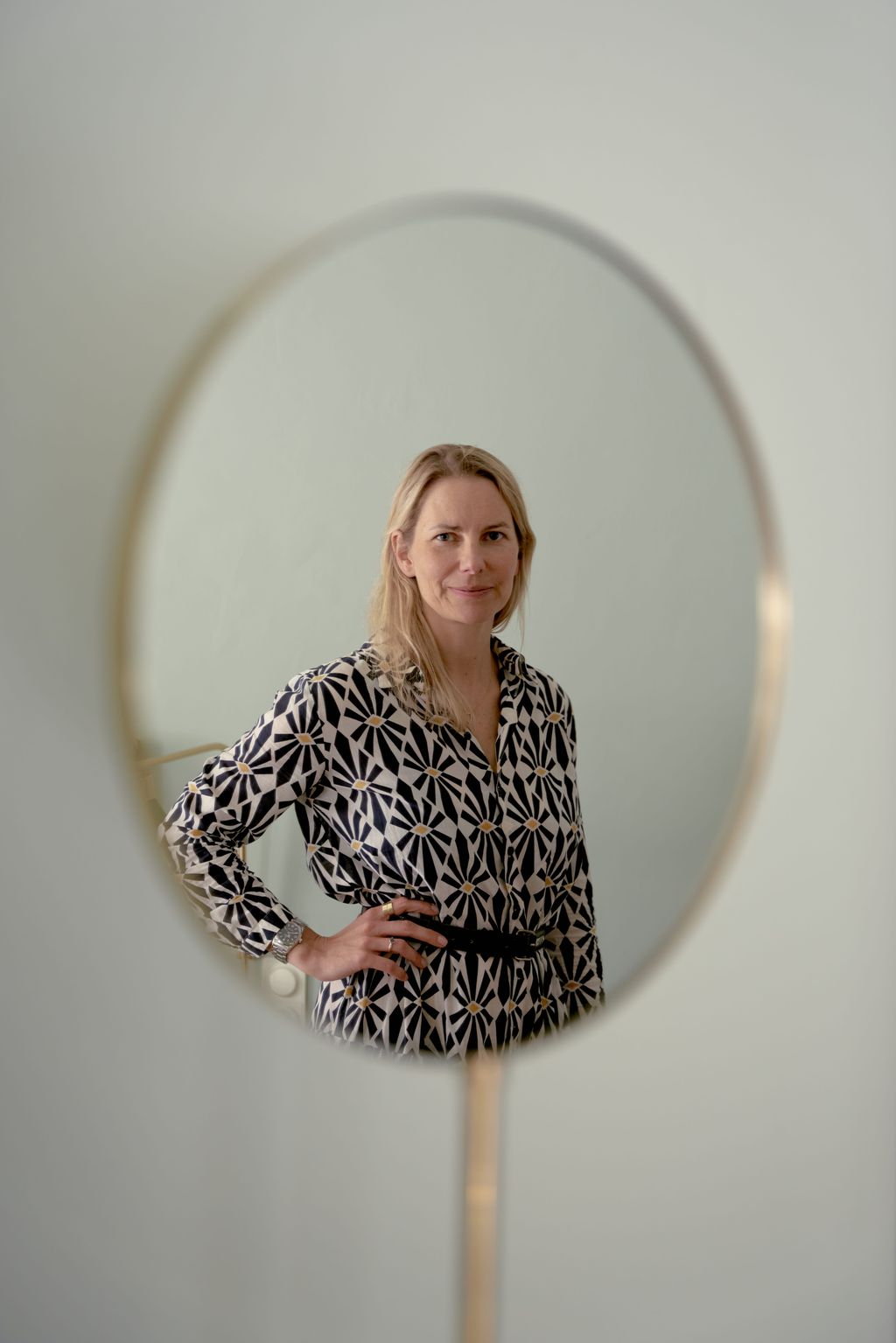
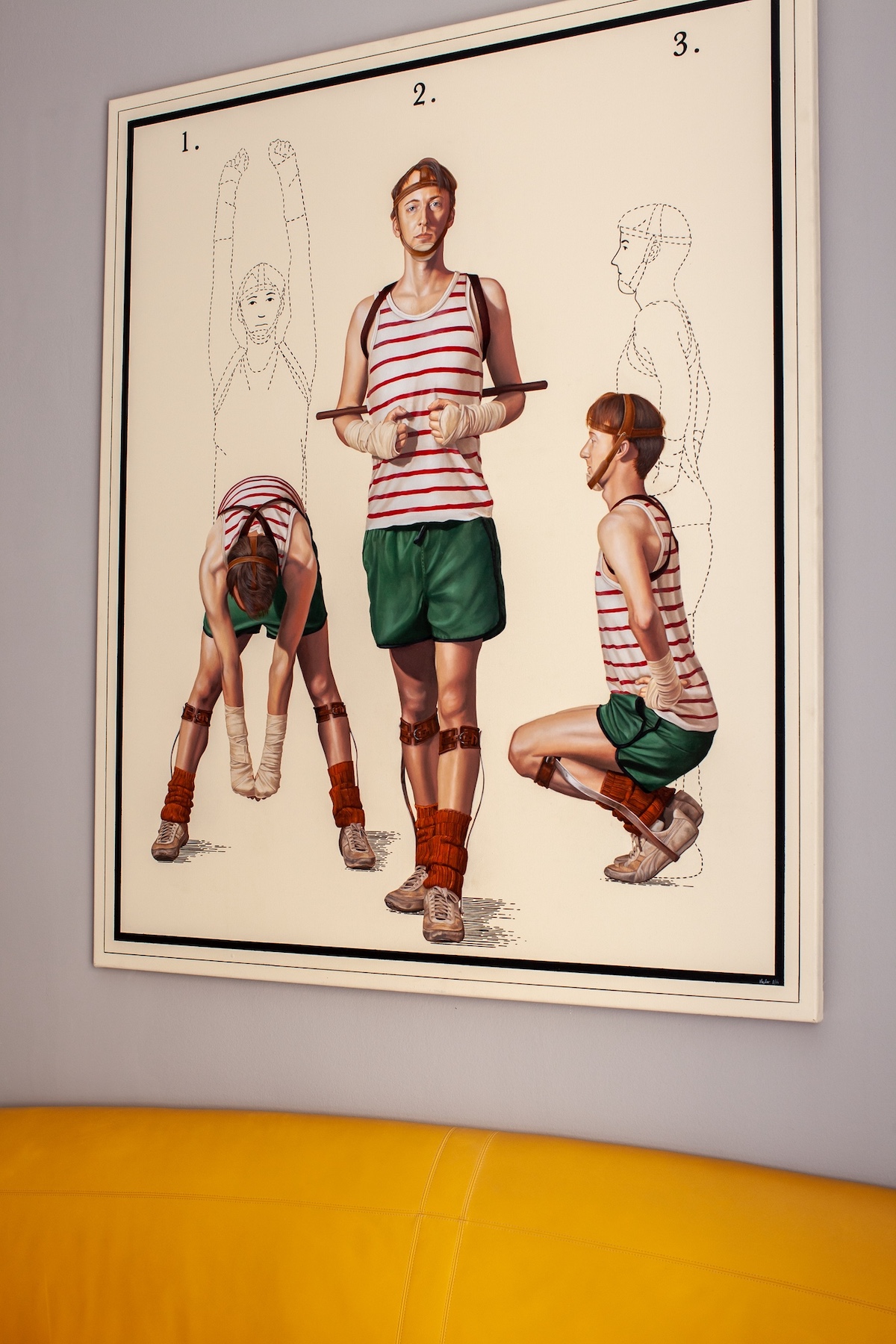
Saskia: At the Altstadt you have the chance to live with art. It’s quite a different approach to sleep under an artwork than to have a look at it in perfect light of a museum or white cube gallery.
Sometimes the art might be disturbing because it brings something up from your own story, in other cases it could inspire you to a certain action. At times an artwork catches your attention immediately, others will dwell in the background silently influencing your mood. Or you might get into a discussion with your travel buddy about whether the drops of colour on canvas are even to be considered art. So, in my view, art always puts something in motion. It can start various processes if you are aware.
Art is also a piece of intimacy in someone’s story, a very personal insight into a character. You have to be brave to be an artist, and I find this very inspiring.
How does the hotel’s setting in the Spittelberg artistic 7th district and its proximity to MuseumsQuartier influence what you commission or how the hotel evolves?
Saskia: When my father opened the hotel in 1991, the area around the hotel was far from being hip or beautiful. The Museumsquartier as it is today did not exist until 2001. He integrated his art collection in every room of the hotel from the beginning, because it always was and still is an essential part of our family’s life and passion. Nowadays, of course, it is an asset for our guests to be so close to the cultural hub that the MQ has become over the years. We collaborate with various museums; however, it does not influence our actions at the hotel.
Altstadt grew from 24 to 62 rooms. How did you preserve intimacy and character while scaling up?
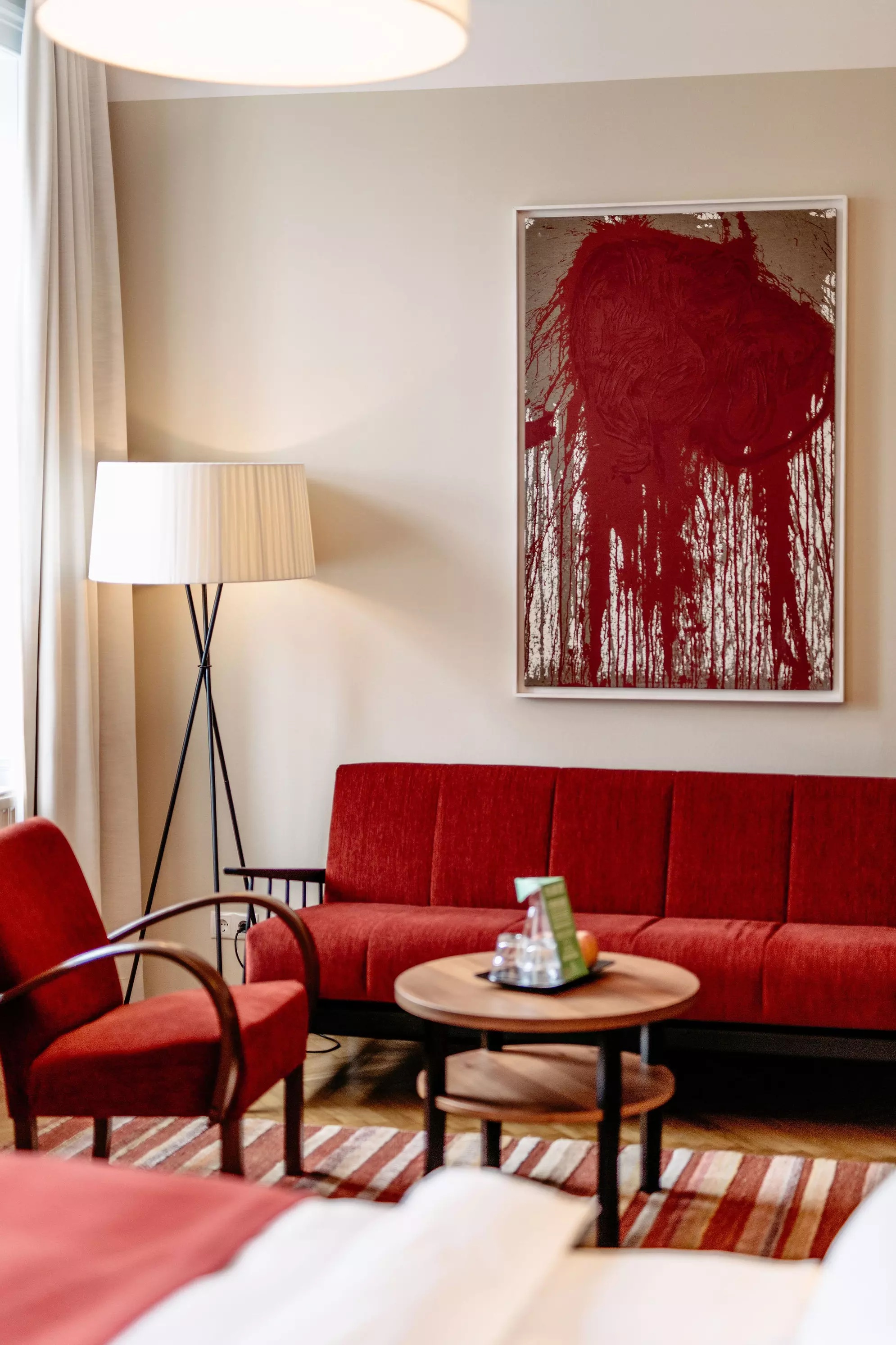
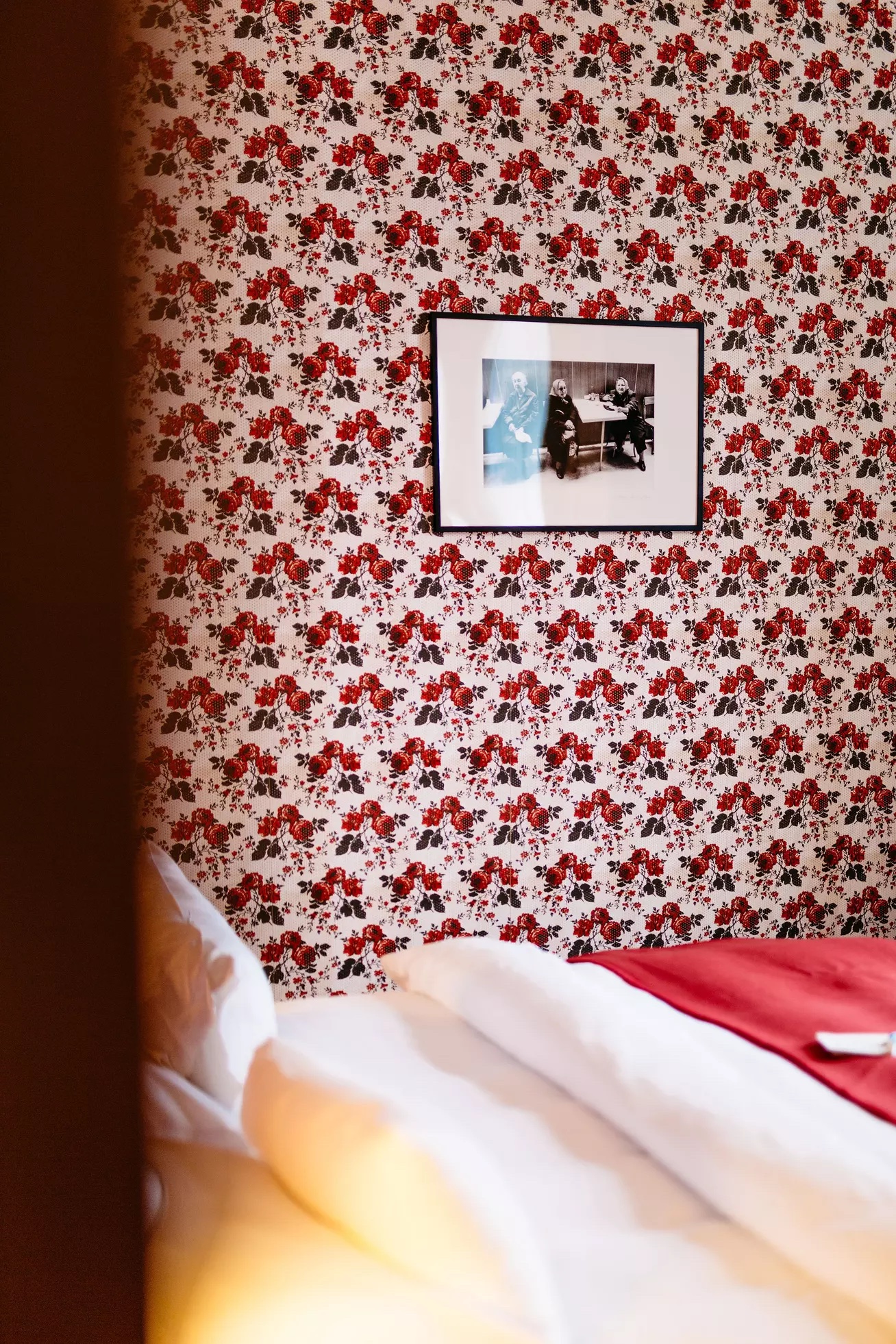
Saskia: I believe preserving intimacy and character is only manageable through the people who work here. It’s their heart of a host, their smile, their interest in making every single guest feel at home at the Altstadt. To achieve that you firstly must create the right surrounding for your team members and treat them well. As soon as they feel at home, as soon as they love to come here and be a host, you will always be able to create a familial atmosphere for the guests as well.
Another aspect is the way we create the rooms, with a lot of personality and furnished more like a private flat than a hotel room. There is always something new to discover, every year we recreate 2-4 rooms, so it never gets boring, even for guests who have come to the Altstadt for more than 20 years.
With landmark institutions like mumok and the Leopold Museum nearby, do museum curators ever influence your curatorial approach, or is Altstadt Vienna its own counter-voice?
Saskia: I am not that involved in the Viennese museum scene and, therefore, do my own thing here at the Altstadt. I choose the artist who touches my heart the most or who triggers something else in me while we get to know each other. People say I have a hand for the complicated.
I enjoyed almost every exhibition I organised so far. However, Altstadt is not a counter-voice: it is just its own character and totally differs from any classical art position or gallery in the city. Our main goal is not to sell the art, though this is always good for the artist, but rather to make someone’s work visible and, just like in Grete Wiesenthal’s Salons, bring people together for conversations about the art.
Do certain pieces spark conversation during breakfast? Which have become conversational highlights, and how do you decide what goes in a salon versus a private room?
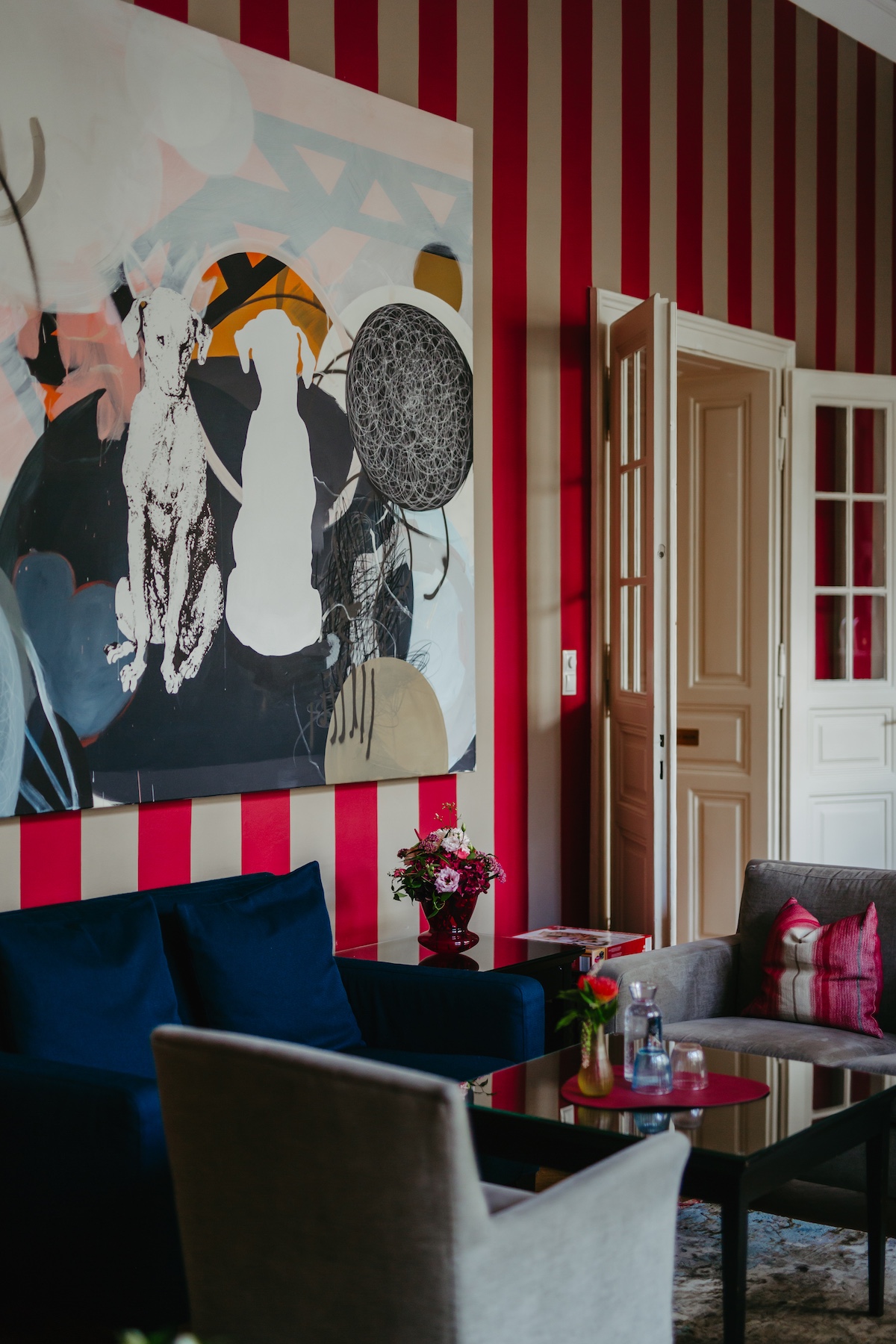
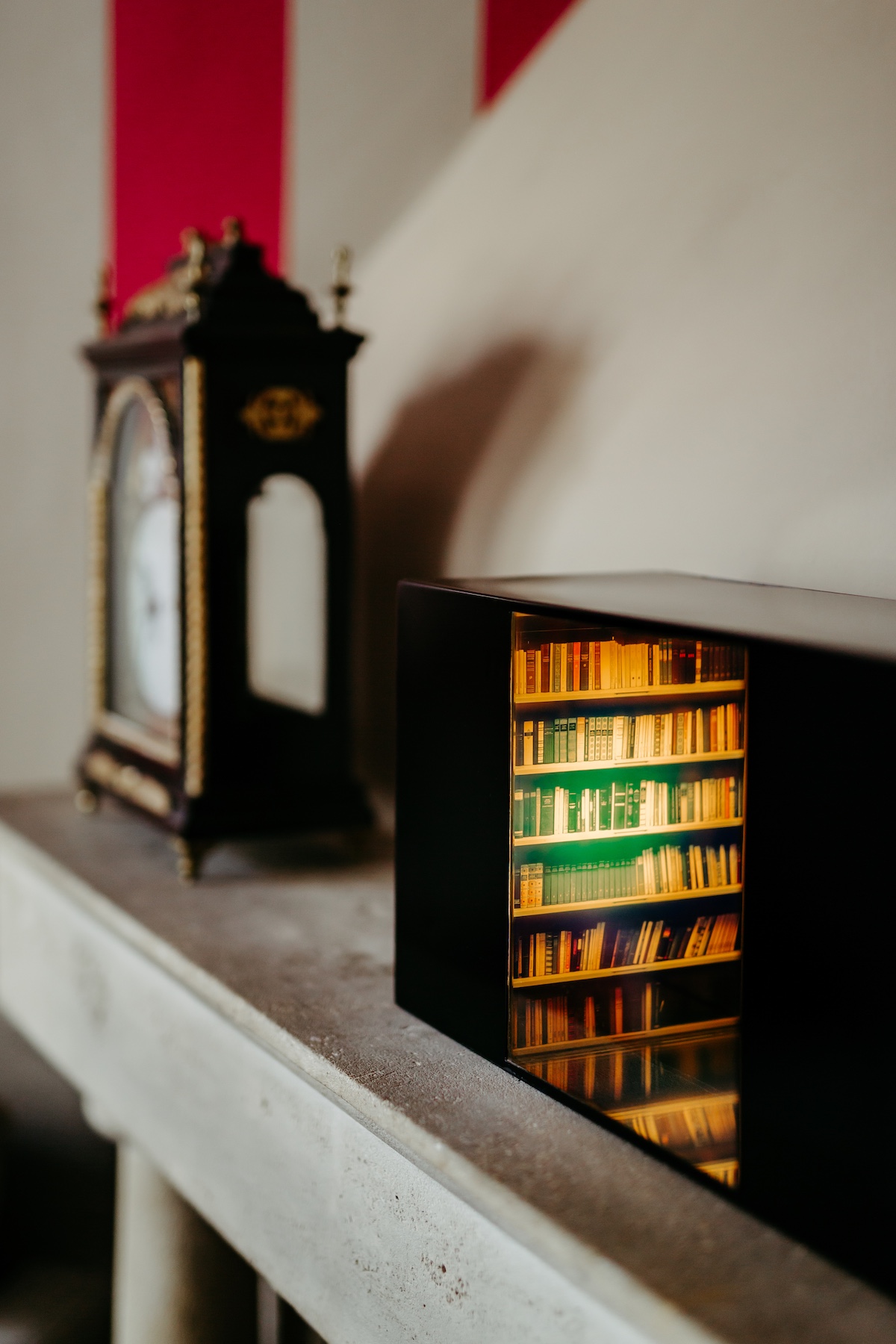
Saskia: Our guests often ask questions about two pieces in the salon – one is a small lit-up box with a picture of a library that mirrors Infinite by Nicolas Grospierre. It’s like a little magic window into another room. It sits on the fireplace, and people are very fascinated by it, which I can totally understand. It’s like being a giant looking into the world of little people.
The large painting by Iris Kohlweiss with the dog has become an icon in the red salon. Without it, guests would ask what happened. We even produced a small edition because so many people love it. (There are still some pieces available, by the way.)
There are some more controversial paintings that we can only put up in public spaces, e.g. clowns or faces that look right at you and some other motifs that I learned are not welcome in a bedroom. But there are only very few of them.
When we create a new room, I usually suggest art from our collection to the designer; often, I choose the art by myself. It’s more of a gut feeling than a strategy.
You once described your leadership philosophy as “management by absence”. What does that mean in practice at Altstadt, and how does it reflect your artistic approach to hospitality?
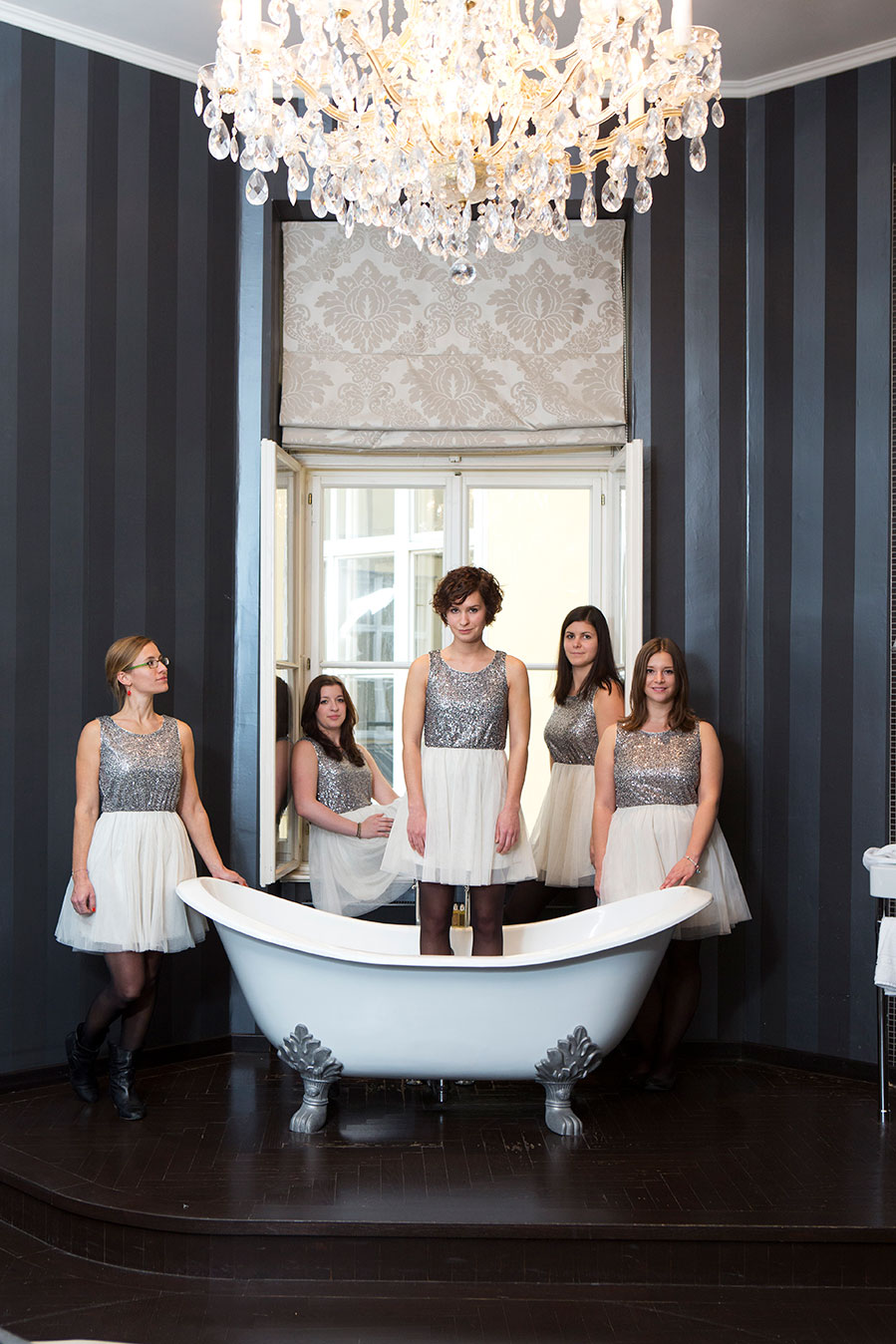
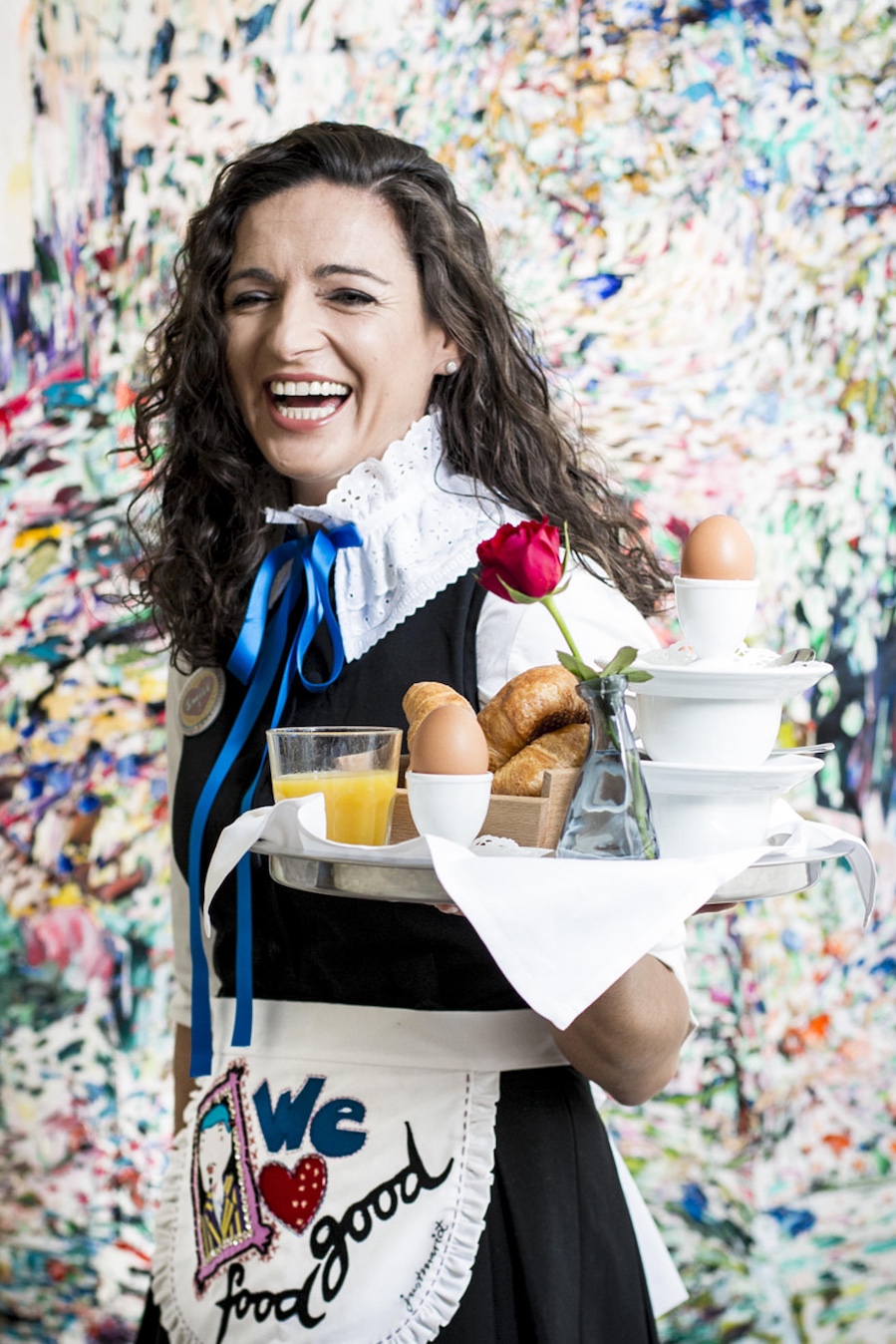
Otto: My luxury is to trust my employees with their decisions and give them so much responsibility that they grow enough self-esteem to manage daily tasks without needing my approval. Of course, it takes some time and effort to find the right characters, but it is worth it. This way, I can take care of the things I enjoy more, like travelling the world to bring back new ideas and inspiration and expand my network. If your Ego is too big and you want to have the final decision on every little process, you also must put in a lot of work and effort yourself. It’s much more fun the other way around.
Always remember to acknowledge your team generously. They are the foundation of your freedom.
The Grete Wiesenthal Suite honours your great cousin, a dance pioneer. How do you see cultural lineage and family heritage continuing to shape the hotel’s narrative today?
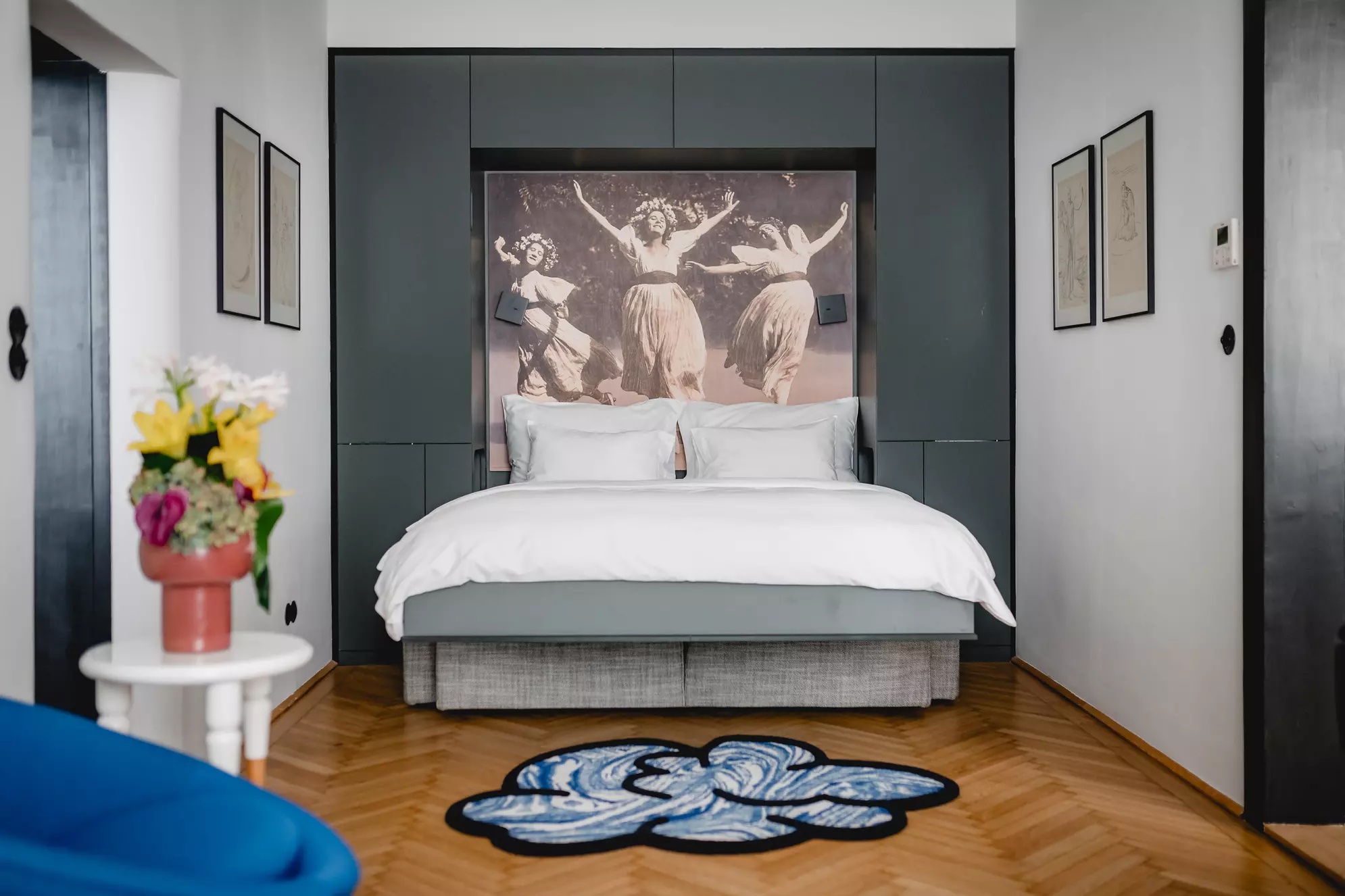
Grete Wiesenthal was a true visionary. She broke free from conventions and created her own style to dance the Viennese Waltz at a time when women rarely had a strong voice. Beyond her pioneering artistry, she gathered various creative minds around her in her renowned Salons.
In the Hotel Altstadt Vienna, this spirit lives on. Our salons, with their high ceilings and wide box windows, are designed to do more than host guests – they invite encounters, spark dialogue, and foster a sense of community. Just as Grete opened space for expression and connection, we see the hotel as a living salon, a place where like-minded souls can come together in a beautiful and inspiring setting.
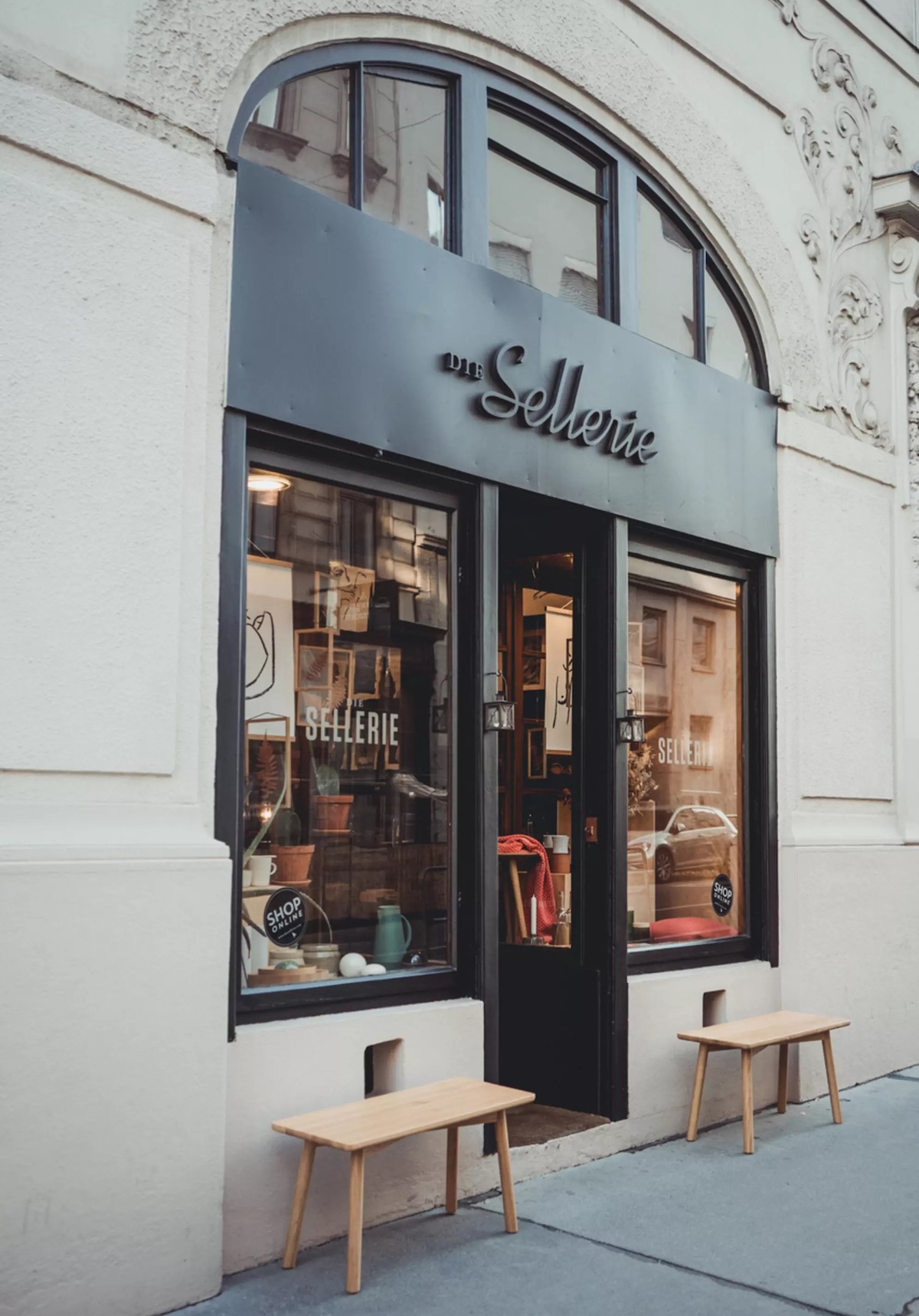
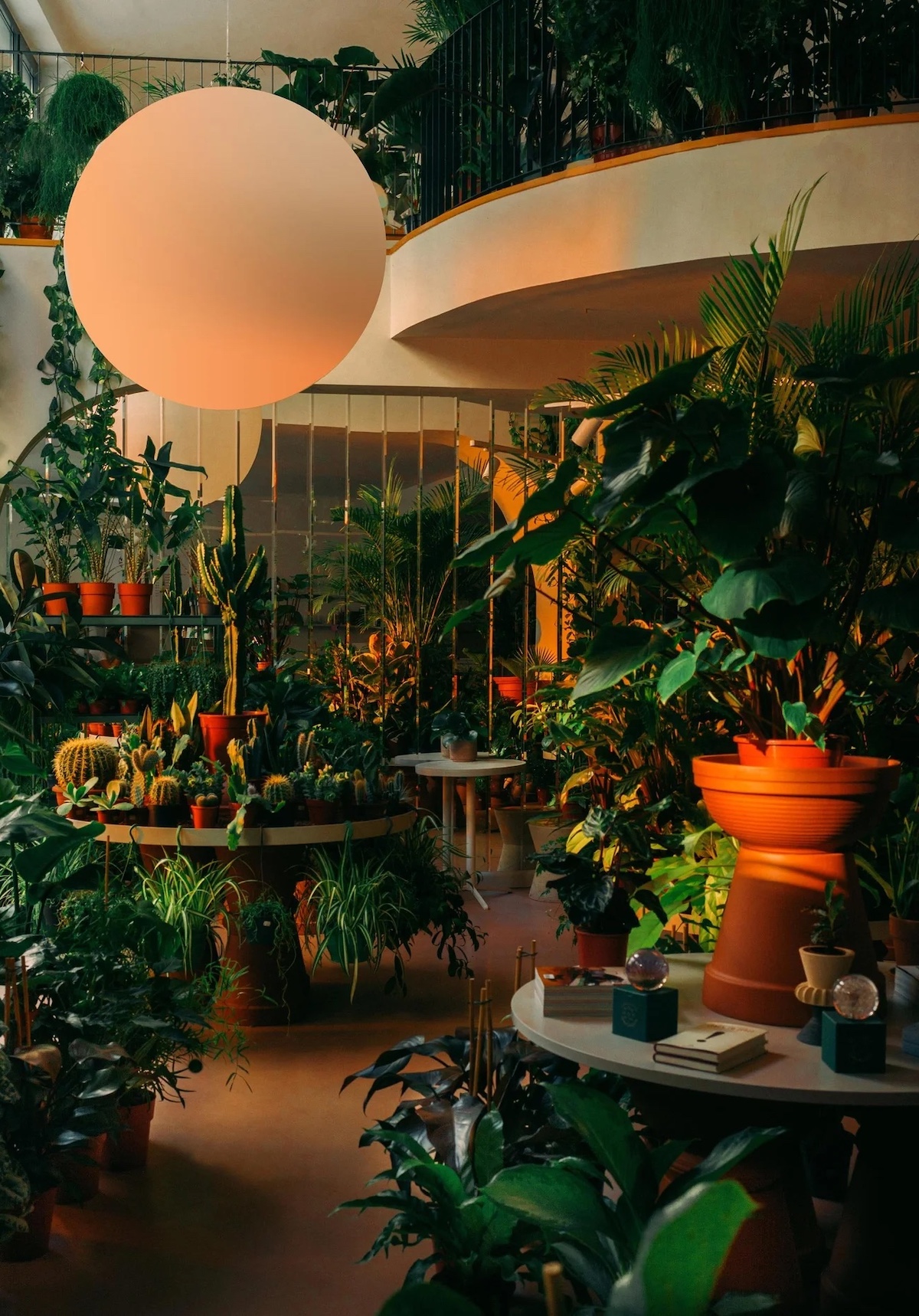
Otto: My favourite and most Viennese place is the Café at the Imperial Hotel. I’ve been coming here to work in the early morning hours for over a decade, so you could call it my office.
I always recommend having a Tafelspitz at Zur Herknerin if you want to enjoy a traditional meal made with heart. Our little restaurant guide also recommends some other really good places.
My daughters would stroll alongside the Donaukanal in summer; they would be very lively and have a spirit of freedom.
Taking a walk through the green part of the Prater is wonderful. Such a vast space of nature in the city. You could also take one of our city bikes to move faster. I also love Praterstraße, where at the start you will find Café Ansari and Mochi – not typically Viennese but on the other hand totally, because Vienna has always been a melting pot of cultures.
I love to explore Altstadt’s neighbourhood and talk to the people behind the brands. For me, this is the real Vienna with all its diversity and beauty. Shops like Glein, Sous Bois, Calienna, Aetmen, Sellerie, Café Espresso and their little daily next door, the beautiful concept store Salotto, Ferrari Zöchling, and too many more to mention. I suggest following your intuition and just exploring the area.
Viennese hospitality has a specific character. How does Altstadt Vienna differ from global luxury hotels, and what uniquely Viennese values do you insist on preserving?
Viennese hospitality might be blunter than in other countries. The Altstadt Vienna has always had a different interpretation of the term “luxury” – the luxury you will experience while staying with us is to be able to just be yourself. The experience of being human is enough – no matter your budget, heritage, religion or else. Every guest is valued equally. The time we spend in conversations to ensure everyone has everything they need to spend their days satisfied, and the quality in every detail, make up the Altstadt luxury.
If I think about the core values, the famous Wiener Gemütlichkeit comes up first. We want our guests to indulge in it while they are staying with us – a sense of comfort, ease, and cosiness, not just physically but socially. When you enter our salon and the piano player plays a wave of sound in the room, it’s like entering a different timeline.
Vienna’s rich history and respect for tradition are important elements of the Viennese soul as well, but always with a quiet streak of irony and satire that keeps the culture from becoming too rigid. For the hotel, this means that we aim to preserve old elements of this patrician house built in 1902, such as its high ceilings, creaking parquet floors, and etched glass windows, while at the same time combining them with timeless design and state-of-the-art technology to fulfil a traveller’s needs.
As the hotel enters a new generation, how are you thinking about its future: the collection, the spirit and the role Altstadt plays in Vienna’s cultural fabric?
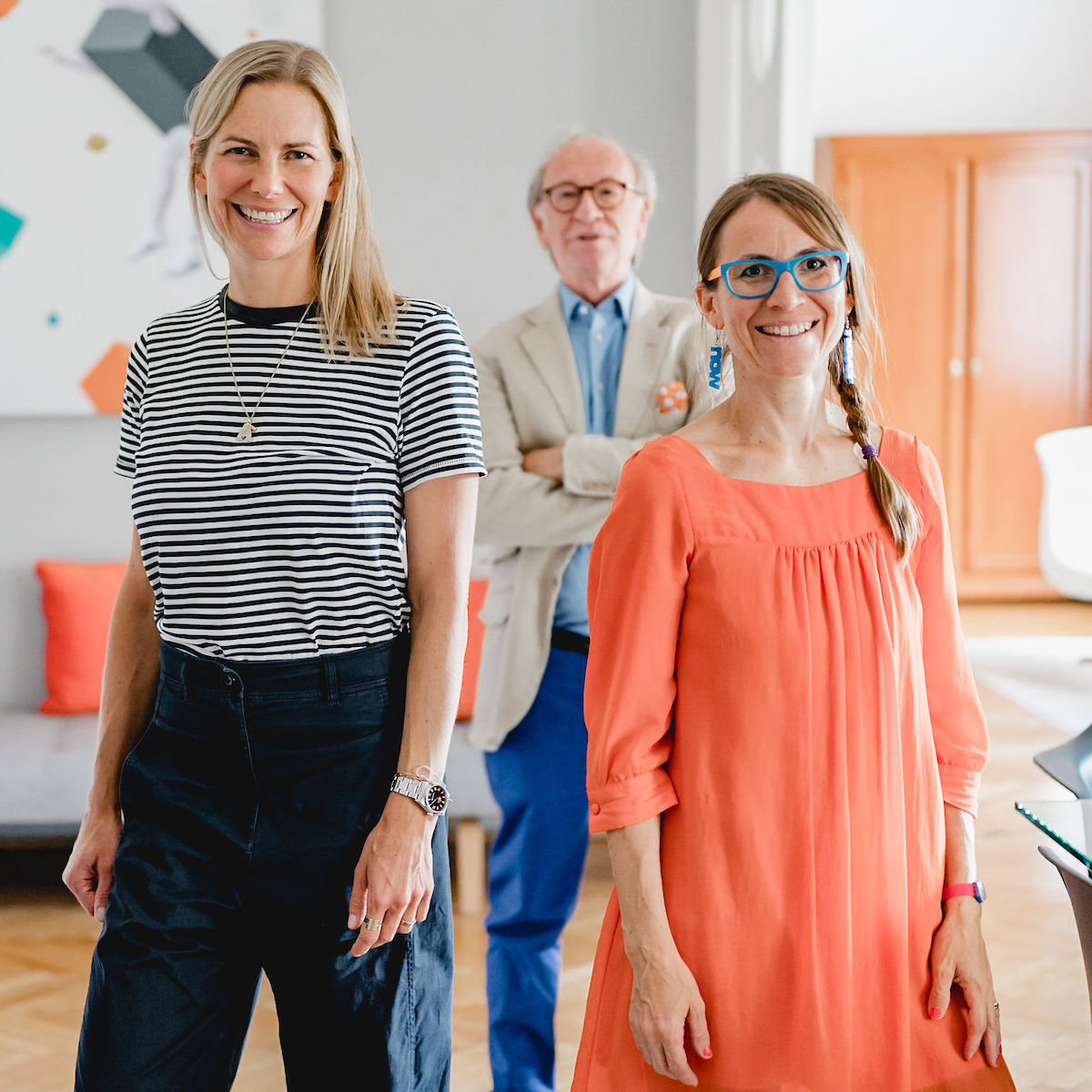
Otto: When I first opened the doors of Altstadt Vienna, my goal was simple: to create a home for travellers that felt alive with art, conversation, and the pulse of this city. Over the years, the hotel’s collection has grown organically, a living gallery that tells the stories of the artists we admire and the moments we’ve shared. It is not static; it evolves with us, just as Vienna itself does. I imagine it will continue to expand — not only in size, but in diversity and dialogue — reflecting the curiosity and creativity of a new generation.
The spirit of Altstadt has always been about more than beautiful rooms or fine service. It’s about fostering encounters — between guests and locals, between past and present, between different ways of seeing the world. This spirit is our true legacy, and I hope it will remain the guiding light, no matter who holds the keys.
As Vienna continues to reinvent itself, I see Altstadt playing an even more active role in its cultural fabric. We can be a platform for voices that deserve to be heard, a salon for ideas worth sharing, and a bridge between tradition and innovation.
One day, I will hand this place over to my daughters. They are already bringing their own perspectives, their own passions, and their own interpretations of what Altstadt can be. My hope is that they will guard its soul fiercely while letting it grow in ways I could never have imagined — because the future, like art, should always surprise us.
What elements of your father’s original vision are non-negotiable for you, and where do you see opportunities to evolve Altstadt for a new generation of travellers?
Saskia: My father’s vision to create a place for people on the road where they feel welcome, safe, seen and inspired is something I want to sustain. The “home away from home” story is still relevant and an important USB to maintain and take care of.
I believe, even with the rise of alleged comfort of AI or despite it, the need for human relations and conversations will gain even more importance. The way our team members communicate with our guests on a very personal and open-hearted level is unique and of a high value. As the world changes, we will attract younger travellers from other parts of the world than we are used to.
Your father built Altstadt as a personal home for art and conversation. How does your own approach to design, guest experience and art acquisition differ, or complement, his?
Saskia: I grew up with art and design as a natural inhabitant of our home and continued to surround myself with it at the hotel. It’s a fluid process since I, along with my sister Lisa, have been working at and co-creating the Altstadt for more than 16 years.
When it comes to art acquisition, Otto makes rather bold decisions and buys large, expensive art from renowned artists, whereas I tend to start small and love to support young artists.
My father put up art pieces in the rooms, but I extended this approach and started to organise art exhibitions and collaborations with art fairs, museums and galleries. I aimed to bring the Altstadt to the minds of the locals as well and open the doors for a younger audience. A large part of the people who come to my exhibitions would otherwise never have set foot into our hotel. So I offer a space for the artist to display his/her work and at the same time try to make the hotel known amongst a (young) Viennese audience.
As head of marketing & art, I see it as my responsibility to bring our passion for art and design to our guests, so I started to offer guided tours of the hotel 10 years ago. This way I can show interested people our art collection and the differently designed rooms and suites, and tell them all the background stories. I love to do those tours because of the immediate feedback I receive from the guests, which usually consists of a lot of WOWs. It’s wonderful how excited they are and how special they feel to look behind the scenes.